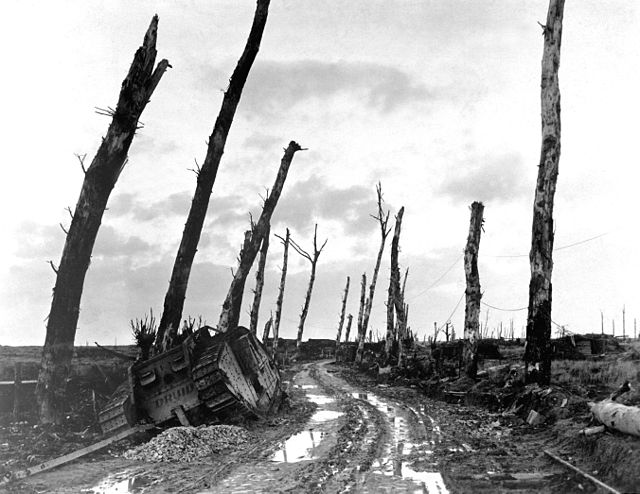The Battle of Broodseinde was fought on 4 October 1917 near Ypres in Belgium, at the east end of the Gheluvelt plateau, by the British Second and Fifth armies against the German 4th Army. The battle was the most successful Allied attack of the Third Battle of Ypres. Using bite-and-hold tactics, with objectives limited to what could be held against German counter-attacks, the British devastated the German defence, prompted a crisis among the German commanders and caused a severe loss of morale in the 4th Army. Preparations were made by the Germans for local withdrawals and planning began for a greater withdrawal, which would entail the abandonment by the Germans of the Belgian coast, one of the strategic aims of the Flanders Offensive.
German artillery piece captured by the 45th Australian Battalion
The British front line and the German defences in the area east of Ypres, mid-1917
Anglo-French objectives, 4 October 1917
Men of the 8th Battalion, East Yorkshire Regiment going up to the line near Frezenberg. Photo by Ernest Brooks
The Battle of Poelcappelle was fought in Flanders, Belgium, on 9 October 1917 by the British Second Army and Fifth Army against the German 4th Army, during the First World War. The battle marked the end of the string of highly successful British attacks in late September and early October, during the Third Battle of Ypres. Only the supporting attack in the north achieved a substantial advance. On the main front, the German defences withstood the limited amount of artillery fire achieved by the British after the attack of 4 October. The ground along the main ridges had been severely damaged by shelling and rapidly deteriorated in the rains, which began again on 3 October, turning some areas back into swamps.
Street corner in Poelcappelle
Ypres area, Autumn, 1917
Allied forces and objectives at the Battle of Poelcappelle
British front line and the German defences east of Ypres, mid-1917







